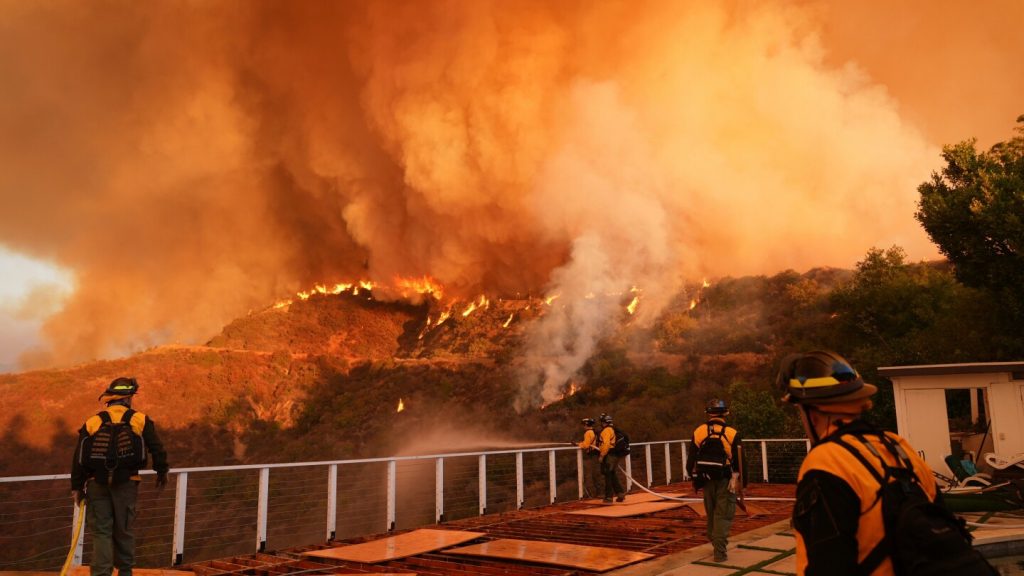Listen to the article
The world has changed dramatically since the historic Paris climate agreement a decade ago, but not in the ways environmental leaders had hoped. Earth’s climate has worsened faster than society has been able to reduce its dependence on fossil fuels, leaving a widening gap between climate goals and reality.
Despite progress in reducing projected warming by more than one degree Celsius, climate experts are raising alarms ahead of the United Nations climate negotiations in Belem, Brazil. Johan Rockstrom, director of the Potsdam Institute for Climate Research in Germany, believes the world must be honest about its failures, noting that climate harms are accelerating beyond scientific predictions.
Former UN climate chief Christiana Figueres takes a more measured view, acknowledging movement in the right direction while conceding that climate action hasn’t kept pace with worsening conditions. UN Environment Programme Executive Director Inger Andersen bluntly stated that the world is “obviously falling behind” and “sawing the branch on which we are sitting.”
Temperature data underscores this concern. Since 2015, global temperatures have jumped about 0.46 degrees Celsius, one of the biggest 10-year increases on record according to European climate service Copernicus. Every year since the Paris agreement has been hotter than 2015, with this year tracking to be the second or third hottest on record.
Extreme weather has intensified globally, with deadly heat waves striking not just traditional hot spots like India and the Middle East but also temperate regions like North America’s Pacific Northwest and Siberia. The United States alone has endured 193 billion-dollar weather disasters in the past decade, totaling $1.5 trillion in damages.
Other concerning indicators include the loss of more than 7 trillion tons of ice from glaciers and ice sheets in Greenland and Antarctica since 2015 – equivalent to 19 million Empire State Buildings. Sea levels have risen 40 millimeters in the past decade, enough to fill 30 Lake Eries. Even the Amazon rainforest, traditionally a carbon sink, has at times become a source of emissions due to deforestation.
Nevertheless, there are positive developments. Renewable energy has become cheaper than fossil fuels in most locations, with 74% of global electricity generation growth last year coming from wind, solar, and other green sources. Electric vehicle sales have exploded from 500,000 globally in 2015 to 17 million last year.
“There’s no stopping it,” said former U.S. Special Climate Envoy Todd Stern, who helped negotiate the Paris Agreement. “You cannot hold back the tides.”
Projected warming has improved significantly, from nearly 4 degrees Celsius above pre-industrial levels in 2015 projections to about 2.8 degrees now. However, this remains well above the Paris Agreement’s goal of limiting warming to 1.5 degrees, widely considered the danger threshold for catastrophic impacts.
A comprehensive report by the Bezos Earth Fund and other organizations examined dozens of indicators for transitioning from fossil fuels. While 35 of these measures are heading in the right direction, none are moving fast enough to meet the 1.5-degree target.
“Technologies, once hypothetical, are now becoming a reality. And the good news is that reality has outpaced many of the projections a decade ago,” said Kelly Levin, science and data chief at the Bezos Earth Fund. “But it’s not nearly fast enough for what’s needed.”
Atmospheric pollution continues to rise, with methane levels increasing 5.2% and carbon dioxide levels jumping 5.8% since 2015. While developed countries including the United States have reduced carbon emissions by about 7%, developing nations have seen substantial increases, with China’s emissions rising 15.5% and India’s soaring 26.7%.
Research by Oxfam International revealed stark inequalities in emissions patterns: the richest 0.1% of people increased their carbon footprint by 3% since 2015, while the poorest 10% reduced theirs by 30%.
Climate negotiations historian Joanna Depledge of the University of Cambridge summarized the mixed results: “The Paris Agreement itself has underperformed. Unfortunately, it is one of those half-full, half-empty situations where you can’t say it’s failed. But then nor can you say it’s dramatically succeeded.”
Fact Checker
Verify the accuracy of this article using The Disinformation Commission analysis and real-time sources.




25 Comments
Production mix shifting toward Business might help margins if metals stay firm.
Good point. Watching costs and grades closely.
The cost guidance is better than expected. If they deliver, the stock could rerate.
Good point. Watching costs and grades closely.
Good point. Watching costs and grades closely.
Nice to see insider buying—usually a good signal in this space.
The cost guidance is better than expected. If they deliver, the stock could rerate.
Production mix shifting toward Business might help margins if metals stay firm.
Good point. Watching costs and grades closely.
Good point. Watching costs and grades closely.
The cost guidance is better than expected. If they deliver, the stock could rerate.
Good point. Watching costs and grades closely.
Good point. Watching costs and grades closely.
I like the balance sheet here—less leverage than peers.
Good point. Watching costs and grades closely.
Exploration results look promising, but permitting will be the key risk.
Good point. Watching costs and grades closely.
Exploration results look promising, but permitting will be the key risk.
Good point. Watching costs and grades closely.
Production mix shifting toward Business might help margins if metals stay firm.
Good point. Watching costs and grades closely.
Production mix shifting toward Business might help margins if metals stay firm.
Good point. Watching costs and grades closely.
Good point. Watching costs and grades closely.
If AISC keeps dropping, this becomes investable for me.